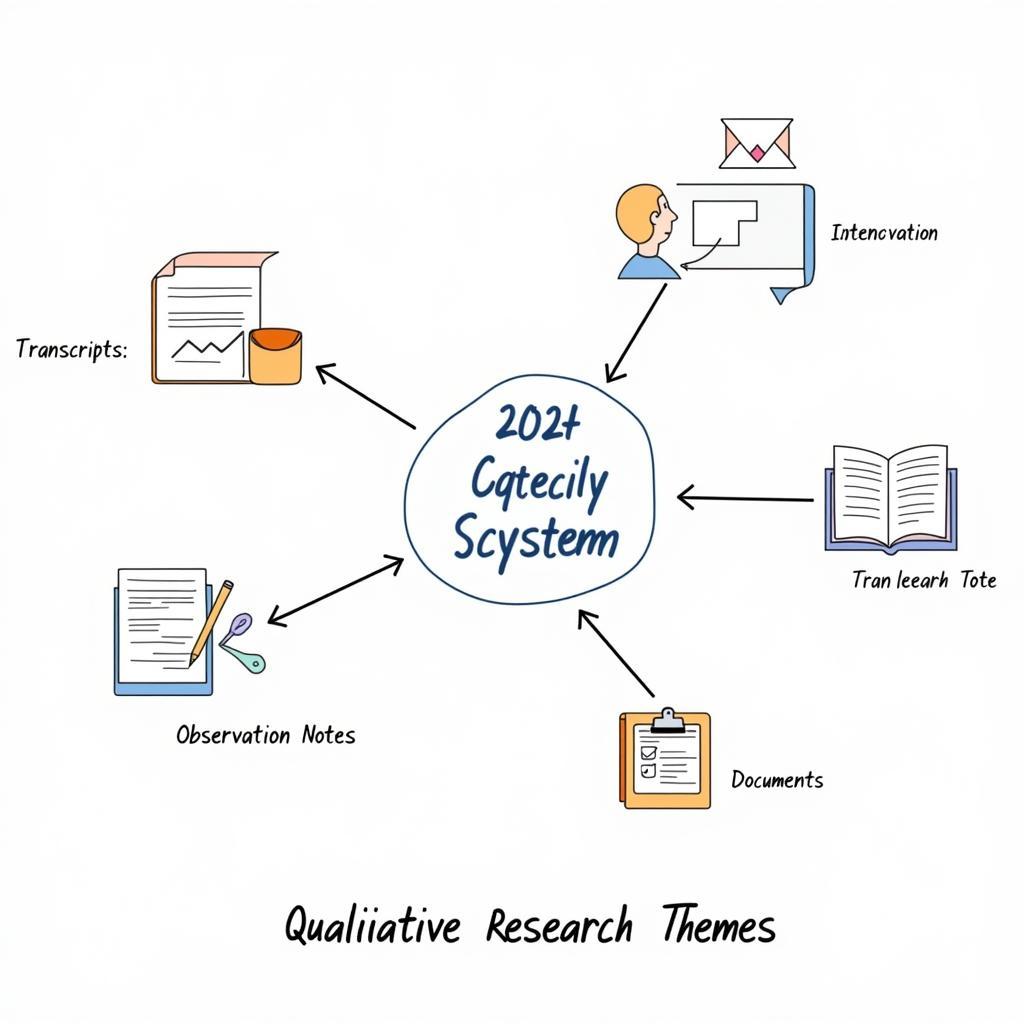Qualitative research delves into the intricate world of human experiences, behaviors, and perspectives. Unlike quantitative research, which seeks to quantify data, qualitative research aims to understand the “why” behind the numbers. It explores complex social phenomena through in-depth analysis of textual, visual, or audio data, revealing rich narratives and generating meaningful insights. At the heart of this exploration lie themes, the recurring patterns and ideas that emerge from the data.
 Themes in Qualitative Research
Themes in Qualitative Research
Uncovering the Essence of Themes
Themes act as the building blocks of understanding in qualitative research. They are not merely topics or subjects but rather represent a deeper level of interpretation, reflecting the underlying meaning and significance within the data. Identifying themes involves a systematic and rigorous process of analyzing data, moving beyond surface-level descriptions to uncover the intricate relationships, patterns, and contradictions hidden within.
Imagine you are conducting a study on people’s experiences with paranormal phenomena. You collect data through in-depth interviews, asking participants to share their personal encounters, beliefs, and feelings. As you meticulously analyze the interview transcripts, you begin to notice recurring patterns in the data.
For example, you might find that a significant number of participants who reported experiencing sleep paralysis also described feeling a presence in the room. This recurring association between sleep paralysis and the sensation of a presence could point to a potential theme related to the perceived overlap between sleep states and paranormal activity.
Types of Themes in Qualitative Research
Themes in qualitative research are not created equal; they can manifest in various forms, each offering a unique perspective on the data. Understanding these different types is crucial for conducting comprehensive and insightful analysis.
1. Inductive vs. Deductive Themes
Themes can emerge from the data organically, driven by the information itself, or they can be pre-determined based on existing theories or frameworks.
- Inductive themes (also known as emergent themes) arise directly from the data without preconceived notions. Researchers analyze the data with an open mind, allowing patterns and connections to surface naturally.
- Deductive themes (also called theoretical themes) stem from existing literature, theories, or research questions. Researchers approach the data with a predetermined set of themes in mind, seeking to confirm or refute pre-existing knowledge.
2. Major vs. Minor Themes
The significance and prevalence of themes can vary significantly within a dataset.
- Major themes represent the most dominant and recurring patterns in the data. They are central to understanding the phenomenon under investigation and offer significant insights into the research question.
- Minor themes provide additional context and nuance to the analysis but are not as prevalent or influential as major themes. They may represent outlier perspectives or experiences that, while important, do not hold the same weight as the core themes.
 Inductive and Deductive Themes
Inductive and Deductive Themes
Examples of Themes in Action
To better understand how themes translate into tangible research findings, let’s consider some concrete examples from different fields:
1. Healthcare: In a study exploring the experiences of cancer patients undergoing chemotherapy, major themes might include:
- Coping Mechanisms: The various strategies patients employ to manage the physical and emotional side effects of treatment.
- Social Support: The role of family, friends, and healthcare providers in providing emotional, practical, and informational support.
- Fear and Uncertainty: The anxieties and uncertainties patients face regarding their diagnosis, treatment, and future.
2. Education: A qualitative study investigating student engagement in online learning environments might identify themes such as:
- Technological Barriers: Challenges related to internet access, software compatibility, and technical skills.
- Motivation and Self-Discipline: Factors influencing students’ ability to stay focused and engaged in the absence of traditional classroom structures.
- Interaction and Community Building: The importance of peer-to-peer interaction and a sense of community in the online learning experience.
3. Business: A study on customer satisfaction with a new product might uncover themes related to:
- Usability: How easy and intuitive customers find the product to use.
- Features and Functionality: Which features customers appreciate and what additional functionalities they desire.
- Customer Support: Experiences with the company’s customer service department.
These examples highlight how themes provide a framework for understanding complex phenomena across diverse fields of study.
The Importance of Rigor and Reflexivity
Identifying themes is not a simple matter of picking out words or phrases that appear frequently in the data. It requires a systematic and rigorous approach to ensure the credibility and trustworthiness of the findings. Researchers must engage in:
- Constant Comparison: Continuously comparing and contrasting data points to identify patterns and refine emerging themes.
- Coding and Categorization: Developing a system for organizing and labeling data to facilitate theme identification. This process may involve coding qualitative research using specialized software.
- Reflexivity: Critically examining one’s own biases and assumptions and how they might influence the research process.
By adhering to these principles, researchers can ensure that the identified themes are grounded in the data and accurately reflect the experiences and perspectives of the participants.
Conclusion
Themes serve as the backbone of qualitative research, providing a framework for understanding the intricate tapestry of human experiences and behaviors. By delving into the “why” behind the “what,” qualitative research, through the identification of themes, unveils valuable insights that can inform decision-making, shape policies, and enhance our understanding of the world around us. As you explore the vast landscape of qualitative research, remember that themes are not merely abstract concepts but powerful tools for illuminating the complexities of the human experience.
FAQs
- What is the difference between a theme and a topic? While a topic is a general subject area, a theme represents a recurring pattern or idea that emerges from the data and reveals a deeper meaning or interpretation.
- How many themes should there be in qualitative research? There is no magic number. The number of themes depends on the complexity of the data and the scope of the research question.
- Can themes change during the analysis process? Yes, themes are not static. As researchers delve deeper into the data, existing themes might be refined, merged, or split, and new themes may emerge.
- What is the role of software in thematic analysis? Software can aid in organizing, coding, and visualizing data, but it’s crucial to remember that software is a tool, and human interpretation remains central to the thematic analysis process.
If you require help with any stage of your qualitative research, including data analysis and theme identification, our team at Paranormal Research is here to assist. Contact us at 0904826292, email us at research@gmail.com, or visit us at No. 31, Alley 142/7, P. Phú Viên, Bồ Đề, Long Biên, Hà Nội, Việt Nam. We offer 24/7 customer support.